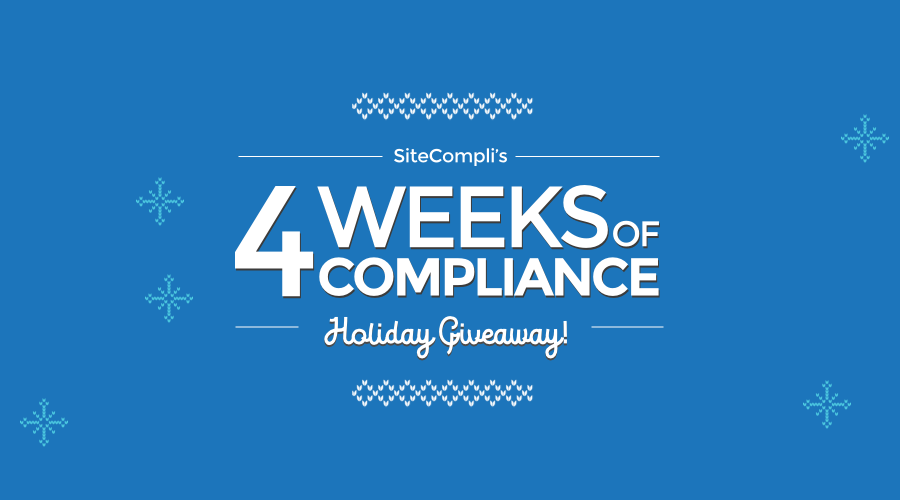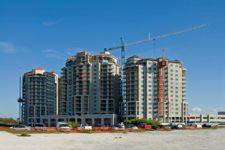After 4 weeks of questions, we’ve got your answers – detailed responses to each 4 Weeks of Compliance: Quiz Edition are listed below. From the DOB and HPD to new rules and increased fines, this answer key acts as a great primer for many of the changes owners and managers will have to face this year.
As an aside, we want to congratulate our final winner from Week 4 (Antonia Q.) and our overall challenge winner (Andrew V.)! While the contest is over, you can still challenge your colleagues to see who knows best when it comes to NYC rules. Of course, the real winning is making sure your building is prepared for 2018 and beyond. Review your answers, and make sure you’re ready for a new year in compliance:
Week One: Elevators 101
As the name suggests, Category 1 elevator inspections are submitted once a year (annually).
Learn more about Category 1 inspections in our Elevator & Boiler Guide
This is true: fines for EVCAT1 violations (failure to file annual Category 1 reports) are $3,000 per device – the same as the fine for ACC1 violations, which are issued for failure to submit Affirmation of Corrections when required. It’s critical to make sure any annual filings marked “Accepted – Unsatisfactory” are followed by an accepted Affirmation of Correction. Otherwise, you may still be liable for a full, $3,000 per noncompliant device fine.
This is NOT true – the fine for an EVCAT5 violation (failure to submit a required Category 5 inspection) is actually $5,000 per noncompliant device, $2,000 more than Category 1 fines.
As referenced in the question about ACC1s, an Affirmation of Correction (ELV-29) is submitted for Category 1 inspections marked “Accepted – Unsatisfactory”, and to correct outstanding PVT violations. This is separate from the AEU2, or Certificate of Correction, submitted to cure or correct DOB-ECB violations (with a similar form for FDNY-ECB violations).
This was a tricky question. In 2015, the DOB’s Guide to Elevators listed approximately 71,000 devices under their jurisdiction. Later, in an official department presentation, the number shot to 84,653.
That said, this question is less about compliance knowledge and more for your information – that’s a HUGE amount of devices that have required filings, regular private inspections, and general governance from the DOB.
Week Two: Filing Frenzy
The DOB issues quarterly penalties for failing to file a single year’s Benchmarking report. On May 1, Aug 1, Nov 1, and Feb 1, the DOB will check all properties on the covered buildings list for that year’s filing. If it’s missing, the building gets an administratively issued violation and a $500 penalty. Each date that passes without a filing is another violation, and another $500 penalty, totaling 4 violations and $2,000 in penalties for one missing report.
This year is especially important – buildings between 25,000 – 49,999 sq. ft. will be required to file LL84 reports for the first time. For more details, visit the city’s Benchmarking Help Center.
High pressure boilers, unlike low pressure boilers, require both internal and external inspections. These must be conducted within the same cycle (year), but should be performed six months apart. Inspectors must notify the DOB at least 10 days before performing the internal inspection via e-mail hpboilers@buildings.nyc.gov.
This isn’t fully true – not yet, anyway. While owners of buildings do have to submit LL84 reports for the first time this May, they do not have to comply with the 10-year LL87 requirement. That said, this may change in the future – stay tuned.
Cycle 8!
Cycle 8B comes to a close on February 21st, when filings for buildings with final block digits of 0, 7, and 8 are due. Cycle 8C, the final sub-cycle of Cycle 8, ends next year. And after 2020, the whole process starts up again with 9A.
Once every ten years, due in the year that matches the last digit of the building’s block number (2018 for 8, 2019 for 9, and so on).
Week Three: New Construction Regulations
$6,000 – an increase from the previous $5,000 penalty for violating a Stop Work Order. All subsequent violations will now see an increased penalty of $12,000 each from the previous $10,000.
Like Stop Work Order violations, the penalty for Work Without a Permit violations has now increased. The minimum civil penalty (not including additional ECB penalties, daily/monthly penalties, or ECB penalty program totals) is $6,000 or 21 times the permit fee, whichever is greater – an increase from the previous 14.
Yes – this new regulation was introduced last summer as Local Law 158, and will go into effect on August 30, 2018.
The violation threshold ratio is a new measurement introduced by the city council in Local Law 205. Sites who are in the 90th percentile of this metric (the number of open Class 1 and 2 DOB-ECB violations issued against the site within the past year divided by square footage) will see at least twice the amount of civil penalties that would have otherwise been imposed for new violations. This count goes into effect June 1, 2018.
Contractors will be added and kept on the watchlist for two years after the issuance of a Work Without a Permit violation. That said, the two year clock resets with each additional WWP violation.
Week Four: Housing Rules
Class C HPD violations are immediately hazardous, as opposed to Class A (minor) and Class B (hazardous) violations.
Class I violations are a bit unique – these come as Orders from the Commissioner, as opposed to traditionally inspector- issued infractions. They include Orders to Vacate, notices of admission into the AEP (Alternative Enforcement Program), and notices of failure to register, among other things.
This is correct. Starting this heat season, there is no outside temperature threshold for minimum heating requirements from night until early morning. After 6 AM and until 10 PM, the daytime threshold is in effect.
The Alternative Enforcement Program is an HPD initiative that identifies buildings with a certain number of open Class B and C violations, as well as ERP charges. Failure to correct conditions or pay amounts due as part of the program will result in significant fines.
Properties are selected for that year’s program around January 31st, and given a limited amount of time to correct qualifying conditions and exit the program before increased fines kick in. Visit the HPD’s official page for more information, and lists of previously qualifying buildings.
This is correct. HPD’s Referral Program requires the DOB to report any uncorrected Class 1 elevator violations at residential properties. If corrections aren’t made, HPD may step in and order repairs, charge for repairs done by HPD contractors, or even enter into litigation or other enforcement actions. Read the full text of Local Law 101 of 2015, which created the Referral Program.
Related Articles
About the Author
Kristen Hariton
Kristen Hariton is the Vice President, Product Engagement at SiteCompli, focused on exploring new solutions and innovations in property operations tech. When she's not sharing the latest industry trends, changes, and updates, she's planning her next adventure to Walt Disney World.




